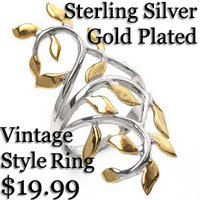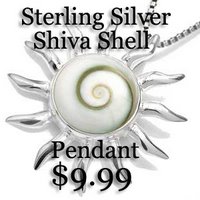Sterling Silver Jewelry History: Jason The Argonauts And The Lydians
 During the 6th and 5th Centuries before Christ, the Lydian empire with its impregnable capital of Sardis perched high on Mount Tmolos changed world history. Contrary to the neighboring Phrygians, who had been in Anatolia since just 1200 B.C., the Lydians were an ancient race whose origins were planted in earlier Hittite cultures. Lydia, lying at the Mediterranean end of an ancient trade route that led all the way to the Arabian coast of Mesopotamia, had always been prosperous, but under the reign of King Alyattes II and later his son and heir Croesus, it became one of the richest empires in Asia.
During the 6th and 5th Centuries before Christ, the Lydian empire with its impregnable capital of Sardis perched high on Mount Tmolos changed world history. Contrary to the neighboring Phrygians, who had been in Anatolia since just 1200 B.C., the Lydians were an ancient race whose origins were planted in earlier Hittite cultures. Lydia, lying at the Mediterranean end of an ancient trade route that led all the way to the Arabian coast of Mesopotamia, had always been prosperous, but under the reign of King Alyattes II and later his son and heir Croesus, it became one of the richest empires in Asia.After beating back the attacking Cimmerians, who had previously overrun King Midas’ neighboring state of Phrygia, Lydia absorbed Phrygia, its wealth and all its lands including the source of King Midas’ wealth: the electrum-rich Paktolos River. To extract precious metals from the river, the Lydians dredged the river’s sediments, filtering out the electrum, gold, and silver particles using sheepskins. The lanolin, a waxy material found in wool, captured the precious metals but allowed sand to wash over it. The fleece, now laden with glistening precious metals was then hung, dried and then burnt at a high temperature. After the fire burnt out the gold and silver metals were easily extracted from the ashes, it is widely believed that this method of extraction gave rise to the legend Jason and the Argonauts and the ‘The Golden Fleece’. However, contrary to the myth, concrete proof of Lydia’s metallurgical prowess and its use of the river’s precious gold and silver ores were later found at archeological excavations near Lydia’s capital city, Sardis.
Archeologists, on discovering an ancient industrial quarter near the Paktolos River just outside Sardis, exposed a variety of objects including a blow-pipe nozzle, bellows, ovens, crucibles, cupules, and waste-materials, which corroborate that the local smiths had the ability to separate gold and silver from placer electrum by cementation and cupellation processes. Further discoveries of stone moulds also testify to the Sardians' utilization of their local supplies of gold and silver for the making of fine jewelry.
However, the gold and silversmiths of Lydia didn’t make history with their ability to produce fine jewelry, but with the world’s first monetary system. While the much earlier established civilizations of Mesopotamia and Egypt were still bartering in the form of silver ingots, silver rings, and other items of precious metals, Lydians were using coins with a mark of authority at a fixed exchange value.
In the 6th Century B.C. under King Alyattes II coins, as defined in Webster’s dictionary as “Gold, silver and copper metal certified by marks upon it to be of a definite exchange value and issued by government to be used as money.” were produced in great numbers.
The ‘Trite’, the most common Lydian denomination of its time, was made from electrum alloys and usually consisted of 53% gold, 45% percent silver and 2% percent copper. It was supposed that the coins were minted for trading, in respect to the fact that Sardis was located at the western end of a major trade route that extended east all the way to the Babylonian gulf in Southern Mesopotamia. However, this has been largely dispelled due to the fact that these gold and silver electrum coins being of far too large a value: about a month's subsistence in total.
Also, despite the large quantities of production, no gold and silver electrum coins were found in or around archeological digs associated with market trade in the Lydian empire, or elsewhere along the extensive connecting trade routes used at the time. It is instead believed that these gold and silver electrum coins were intended as trade for tax payments, religious offerings, wedding presents, hospitality offerings, or salaries to mercenaries.
Whatever the case, Lydia was the first example of the transition from an agricultural barter economy to a commercial monetary urban economy. Today, scholars believe that the Lydians invented the world's first free market, and created gold, silver and electrum coins because they were the first to recognize their profit-making potential. This was proved in Lydia’s economic growth, which in less than a hundred years under King Alyattes II and his son and heir Croesus saw it go from a kingdom to an empire. Indeed, it is from this period that the expression ‘As Rich As Croesus’ is derived.
This monetary phenomenon quickly spread through the rest of Asia, Asia Minor and Europe. It was during the reign of Croesus, who had begun to build diplomatic ties with mainland Greece, that the Athenian statesman Solon visited Lydia. During his stay Solon, who later formed the weight standards for the silver Athenian drachmas, became influenced by Lydia’s ingenious gold and silver monetary reforms and carried the idea back to Greece.
Copyright © SilverShake Corporation. All Rights Reserved.
Written for SilverShake, an online retailer of 14k gold plated sterling silver jewelry and sterling silver jewelry at wholesale prices. Purchase today and get silver jewelry worth up to $60...Free!






